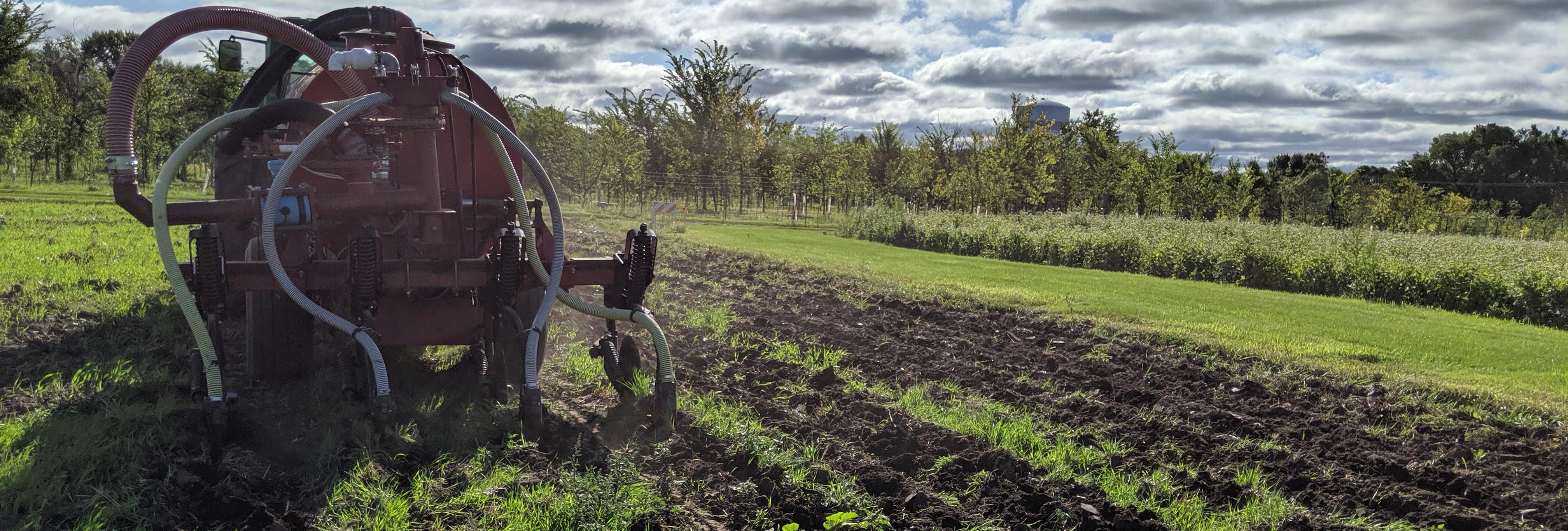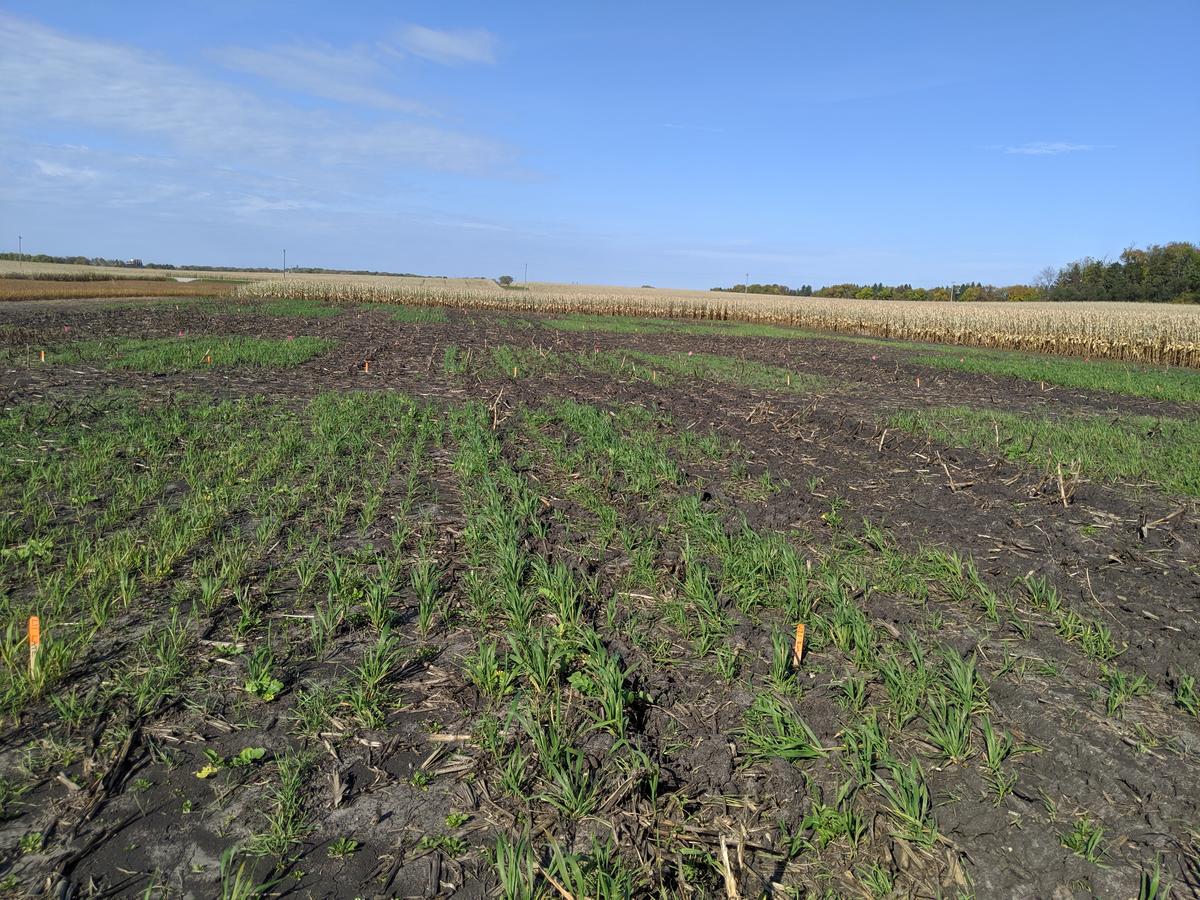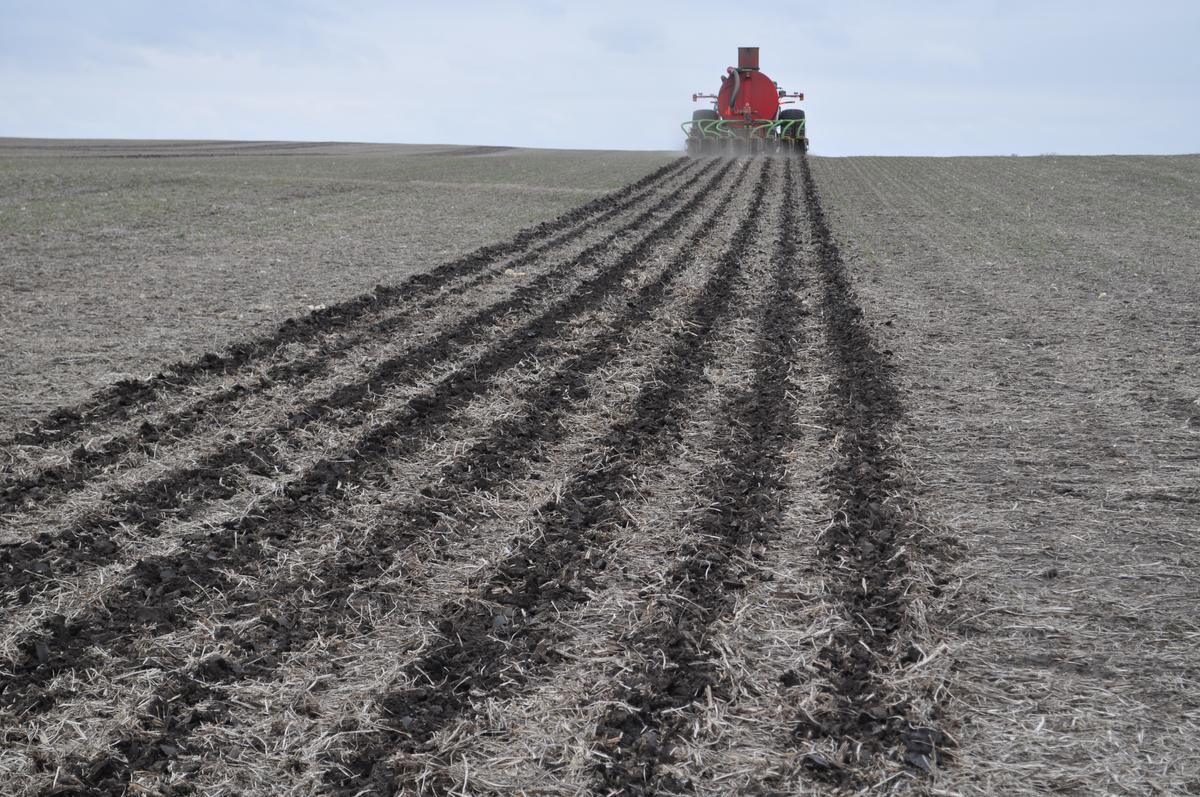
There is a growing interest in using cover crops for improving soil health and water quality. In cool, northern climates, however, adoption is low due to the short growing season. On the other hand, interseeding cover crops allows more time for growth and is becoming popular. Liquid manure application, which often happens in the fall in this region, is one practice that could benefit from the use of cover crops. Newer injection technologies have made manure application into cover crops possible, but many questions remain. Our primary goals are to develop and demonstrate best management practices for the integration of cover crops and manure injection and to evaluate whether the combination of practices has added beneficial effects when compared to each practice alone.
We are using mix of on-farm and small plot research for this project. This allows to study several practices under more controlled conditions while also being able to demonstrate these techniques on a larger scale using farm-scale equipment. We are analyzing the following:
- the effectiveness of a variety of cover crop seeding timing into corn and soybean;
- manure application timing in cover crops and related changes in nutrient cycling;
- soil health information for cover crops, manure application, and the combination of both practices;
- uptake of manure nutrients by a winter rye cover crop;
- the impact of the studied practices on the following corn crop yield and nutrient uptake.
This work is supported by the Conservation Innovation Grants program at USDA’s Natural Resources Conservation Service and by the MN Corn Research and Promotion Council.

